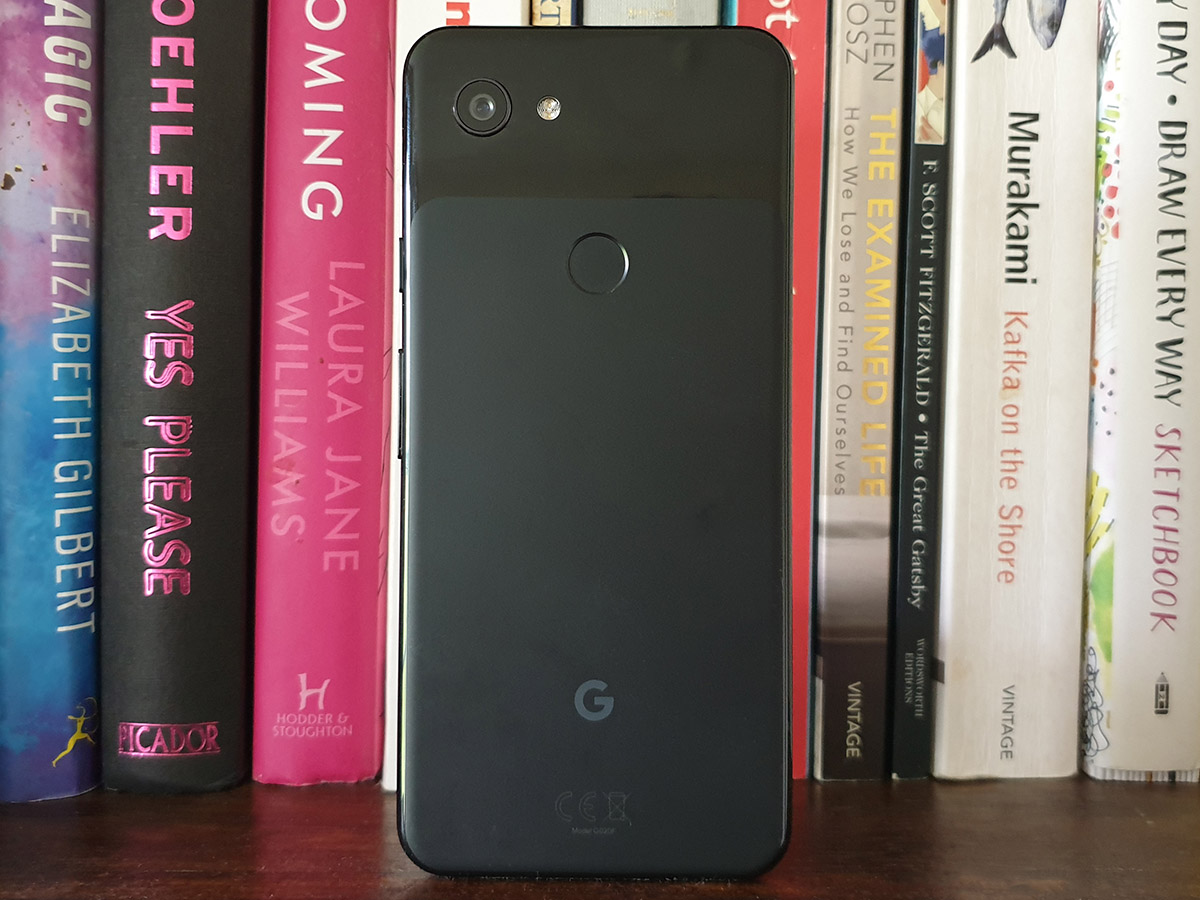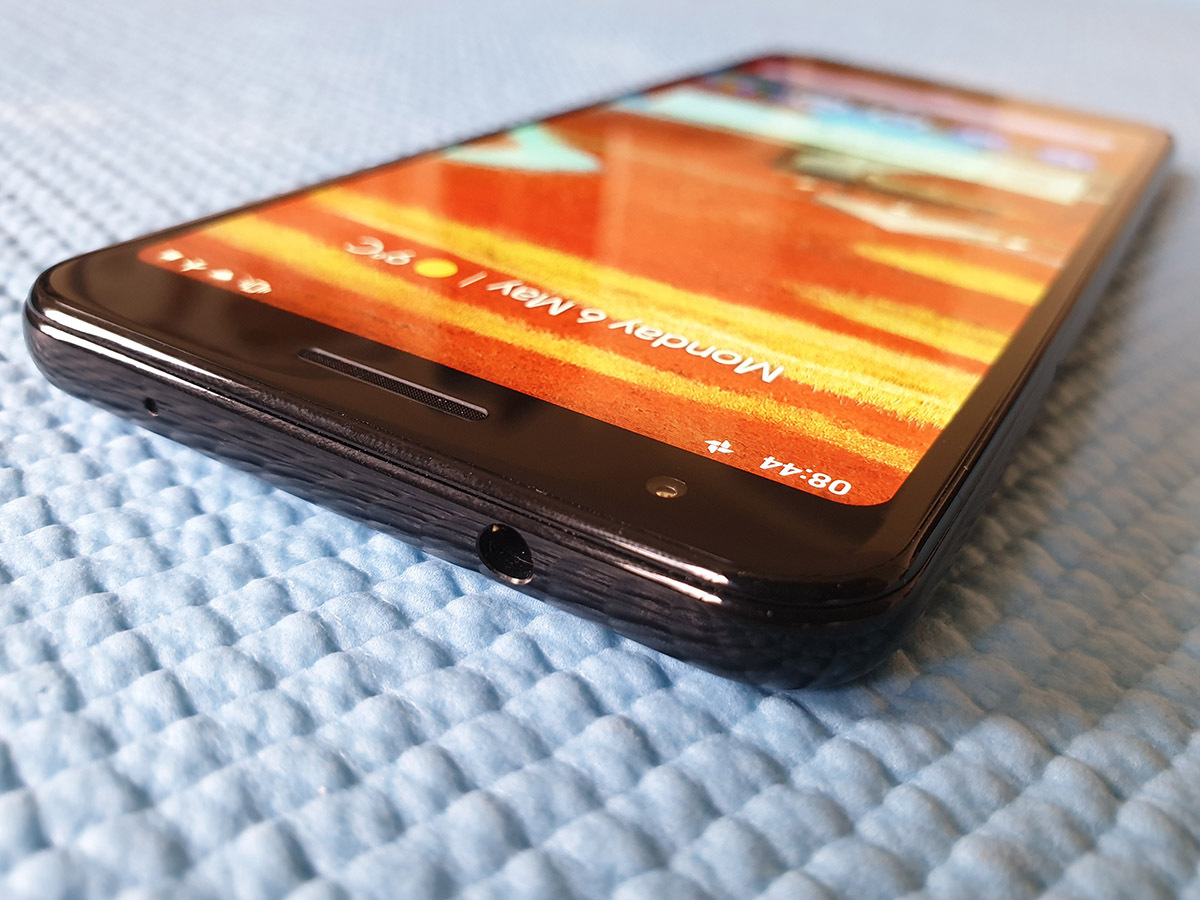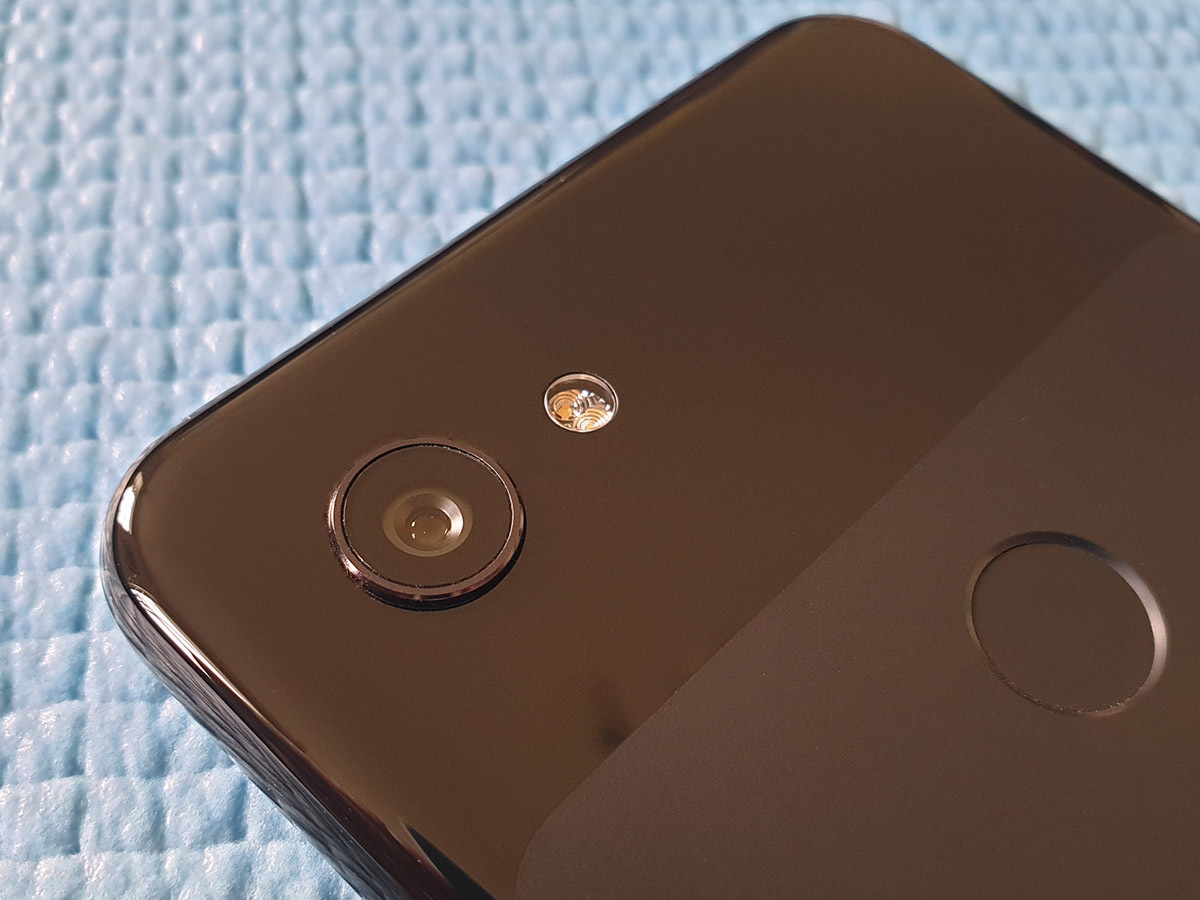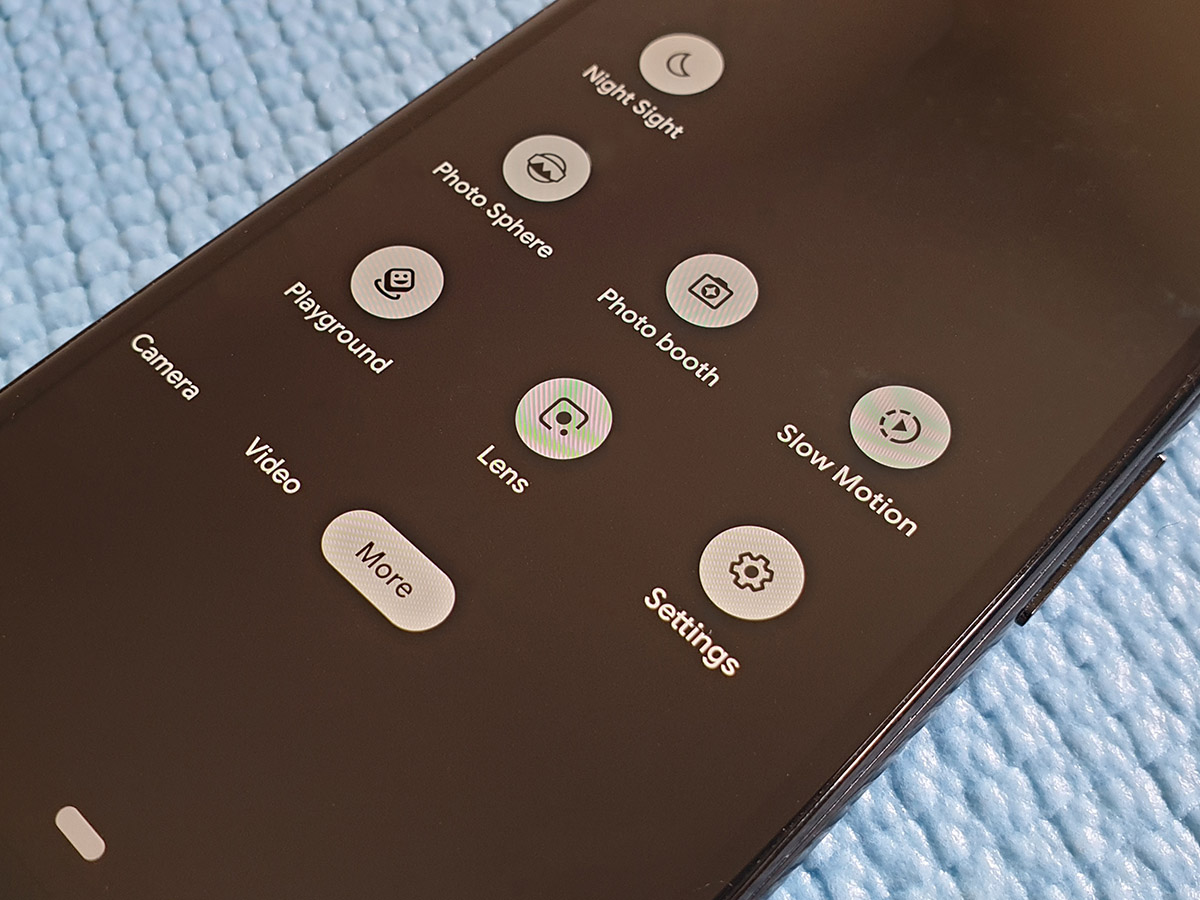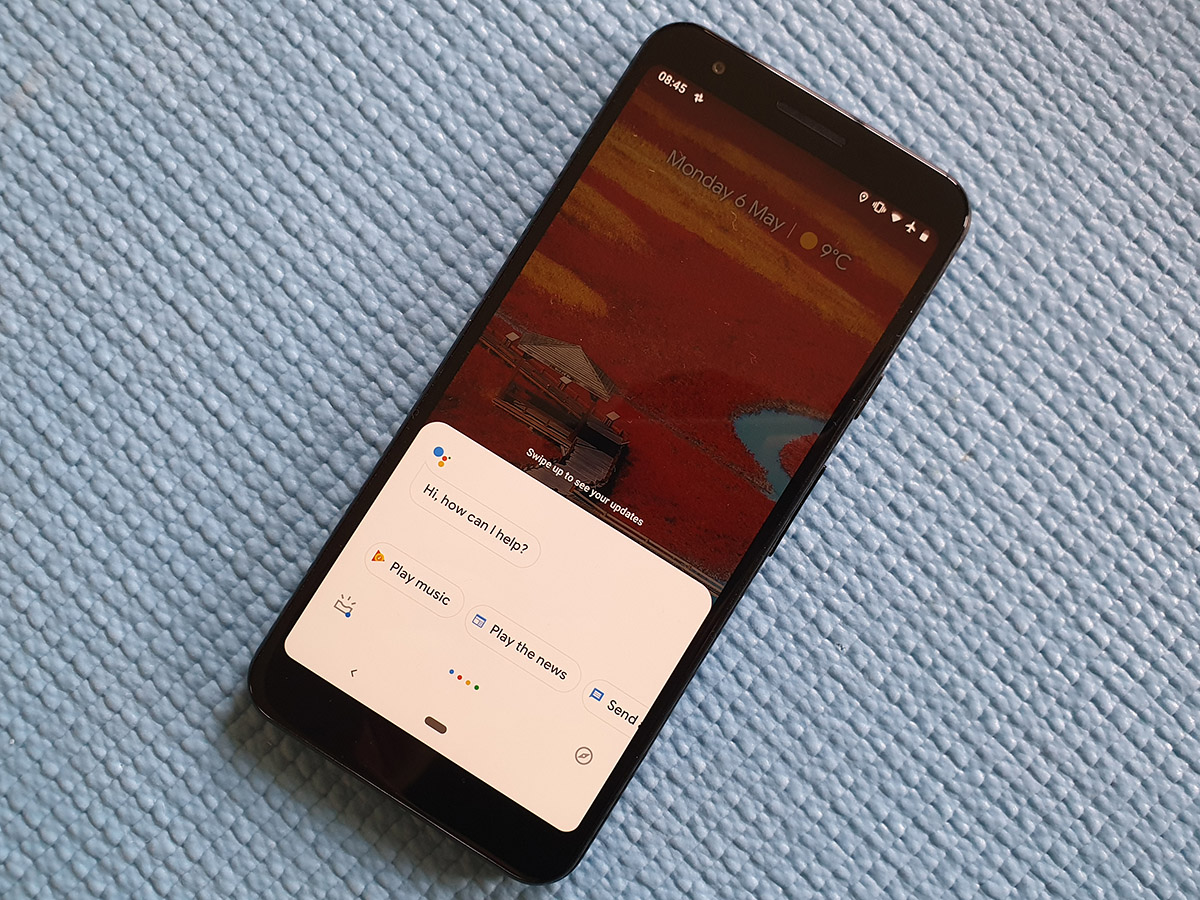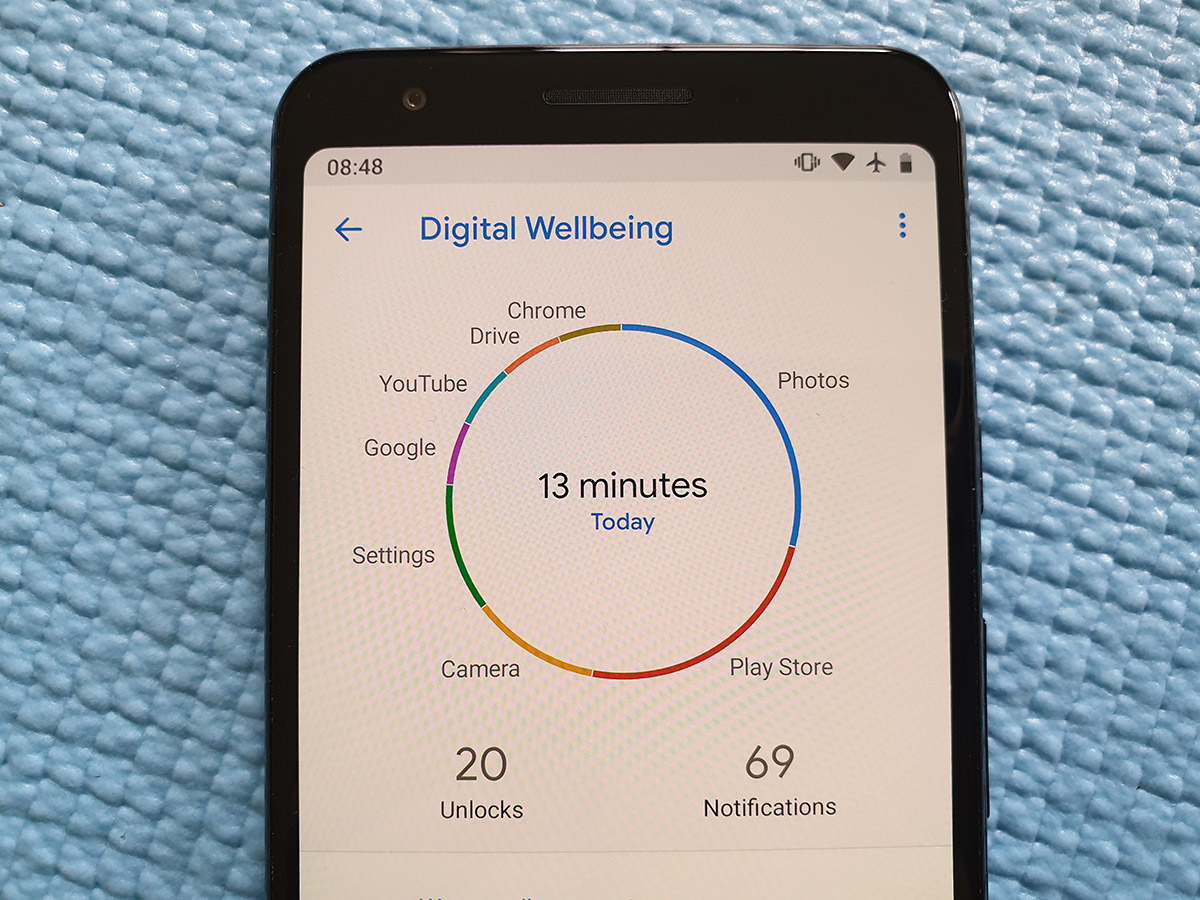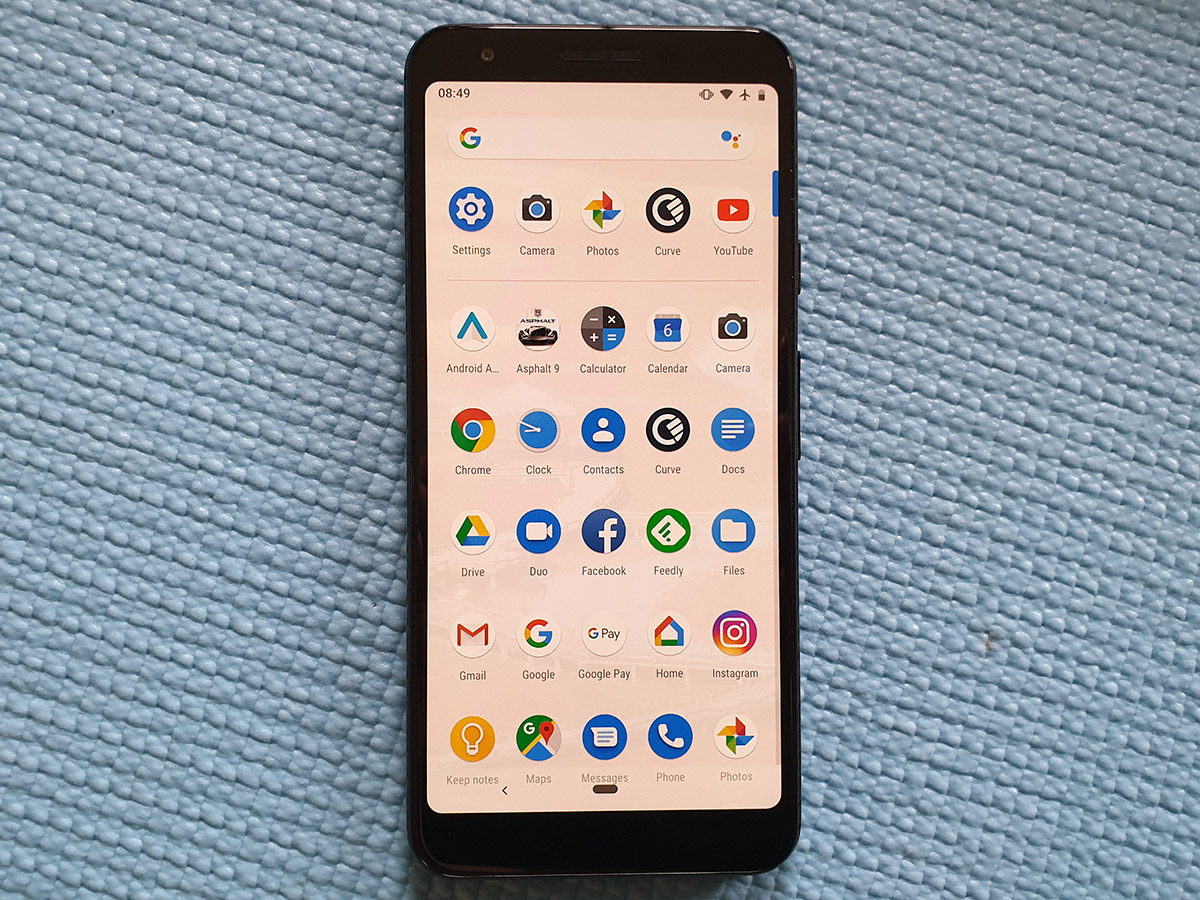Google Pixel 3a review
Google takes back the mid-range with a laser focus on simplicity
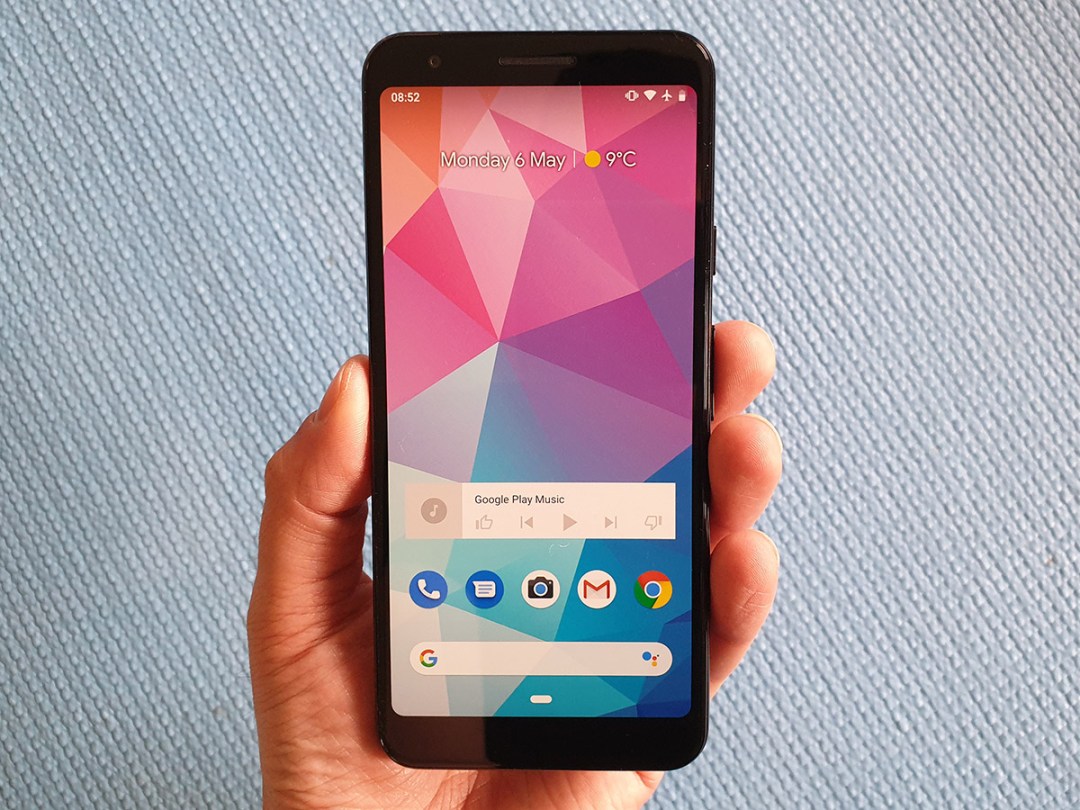
Talk about bucking the trend.
While the rest of the smartphone world is convinced we all need a camera bag’s supply of lenses and is on a crusade to eradicate screen bezels from existence, Google gives us the exact opposite.
The Pixel 3a is a handset shorn of gimmicks: there’s just the one rear snapper. It’s made from (gasp) plastic instead of glass and metal. You won’t need a bank loan to buy one.
That puts all the attention on Android, proving just how confident the company is in its software. It also means design and an extensive feature list take a back seat, but the end result is a user experience that is (on the Google side of the fence) second to none.
DESIGN & FEATURES: ALL YOU NEED, NOTHING YOU DON’T
The 3a isn’t all that different from the Pixel 3, at least in terms of looks. It has the same familiar Google design, which has really only seen minor tweaks in three years.
That means the same boxy frame, somewhat beefy screen bezels, and just a handful of colour options. Only here everything is made from polycarbonate plastic instead of glass, to help keep the price down.
At a time when the rest of the industry is mixing things up with notches, hole punches and colour-shifting hues, there’s no doubt the 3a looks basic. Will that push some people towards fancier Samsung Galaxies, Huawei P30s and OnePlus 6Ts? Probably.
The design decisions make sense, though. Google has gone for function, not fashion.
The frame makes room for pressure-sensitive sides, which make more sense as the default way for waking Google Assistant now that physical home buttons have been phased out in favour of Android Pie’s gesture-based pill.
There’s a quick, reliable physical fingerprint sensor instead of fancy-yet-fallible in-display scanning.
Those bezels give you somewhere to put your thumbs when watching videos. It fits comfortably in your palm, feels a lot more premium than the materials would suggest thanks to a soft-touch finish on the back, and feels reassuringly weighty too.
Would water resistance have been nice? Sure, but not if it meant upping the cost to fund the certification process.
CAMERA: ALGORITHMIC ACE
When it arrived last year, the Pixel 3 blew almost all other phone cameras out of the water with its software-optimised snaps – and did it all with a single lens. It took Huawei’s quad camera P30 Pro to best it for low-light and zoomed-in photography.
The 3a has the same 12.2MP rear snapper as the Pixel 3, with an f/1.8 aperture, optical image stabilisation and dual-pixel autofocus – great hardware, but on the face of it little has changed since the Pixel 2 back in 2017.
The major changes have come through software, and the difference they make is astounding. No other phone captures as much fine-grain detail as a Pixel.
Exposure is almost always accurate, with multi-shot HDR processing creating lifelike images regardless of lighting conditions.
Colours are realistic, though a little more vibrant than in previous years because Google knows most people prefer a bit of punch to absolute true-to-life captures.
Contrast is king, and the results speak for themselves. You can even get away with a bit of digital zoom, thanks to the algorithm-assisted processing. Look closely and you can see quality isn’t quite up to the same standard as the dual-camera setups you’ll find on the Galaxy S10, iPhone XS or Huawei P30 Pro, but not enough that it will put you off pinching in when you can’t get any closer to your subject.
The P30 Pro is now the phone to beat for nighttime photography, and even the Pixel’s dedicated Night Sight mode doesn’t come close to beating it, but it does manage to capture an impressive amount of detail once the sun goes down.
Up front, the single selfie cam has an f/2.0 aperture and fixed focus. That puts it at a disadvantage to the Pixel 3’s f/1.8 PDAF snapper, and that’s before you take the secondary wide-angle cam into account.
You’ll need to squeeze in to get a group of mates in the frame with you with a 3a in your pocket. Quality is still well up on the mid-range average, even those with significantly higher pixel counts – just not quite as impressive as the Pixel 3, which had some of the best selfie game in the business.
At least the software-only portrait mode does a good job of detecting edges and blurring backgrounds, with only fine detail like loose hair strands proving a challenge.
Importantly, the Pixel 3a does all this for £399 – there’s no other phone that can match it for the money, and it outdoes handsets costing twice the price.
OS & SOFTWARE: BEST SLICE OF PIE YET
Pixels have long been the way to get Android as Google intended it, and that’s especially true here.
Setup is like opening the first page in a brand new notebook: clean, simple, and with no bundled apps you’ll never use or pointless duplicates. It’s the Scandi-cool of mobile operating systems – everything you need, and nothing you don’t.
9.0 Pie does change a lot of the features we’ve spent the last few years taking for granted, which can take some getting used to.
Physical buttons are out, gestures are in. A two-stage flick opening the recent apps menu first, then the app drawer after. The Google search bar sits right at the bottom now, taking priority over your apps for easy reach. The on-trend digital wellness feature makes an appearance too.
You can set time limits for the apps you use too often, turn the screen to greyscale at bed time, and shows you exactly how much of your life is wasted scrolling through social media.
Of course, all of this was true about the Pixel 3 and Pixel 3 XL – only here you’re getting it all for much less cash. Which can only be a good thing.
As a Pixel phone, you’re guaranteed three years of security and OS updates too – so you don’t have to worry about being left behind if you take out that extended contract plan.
DISPLAY & SOUND: SIMPLE, STUNNING
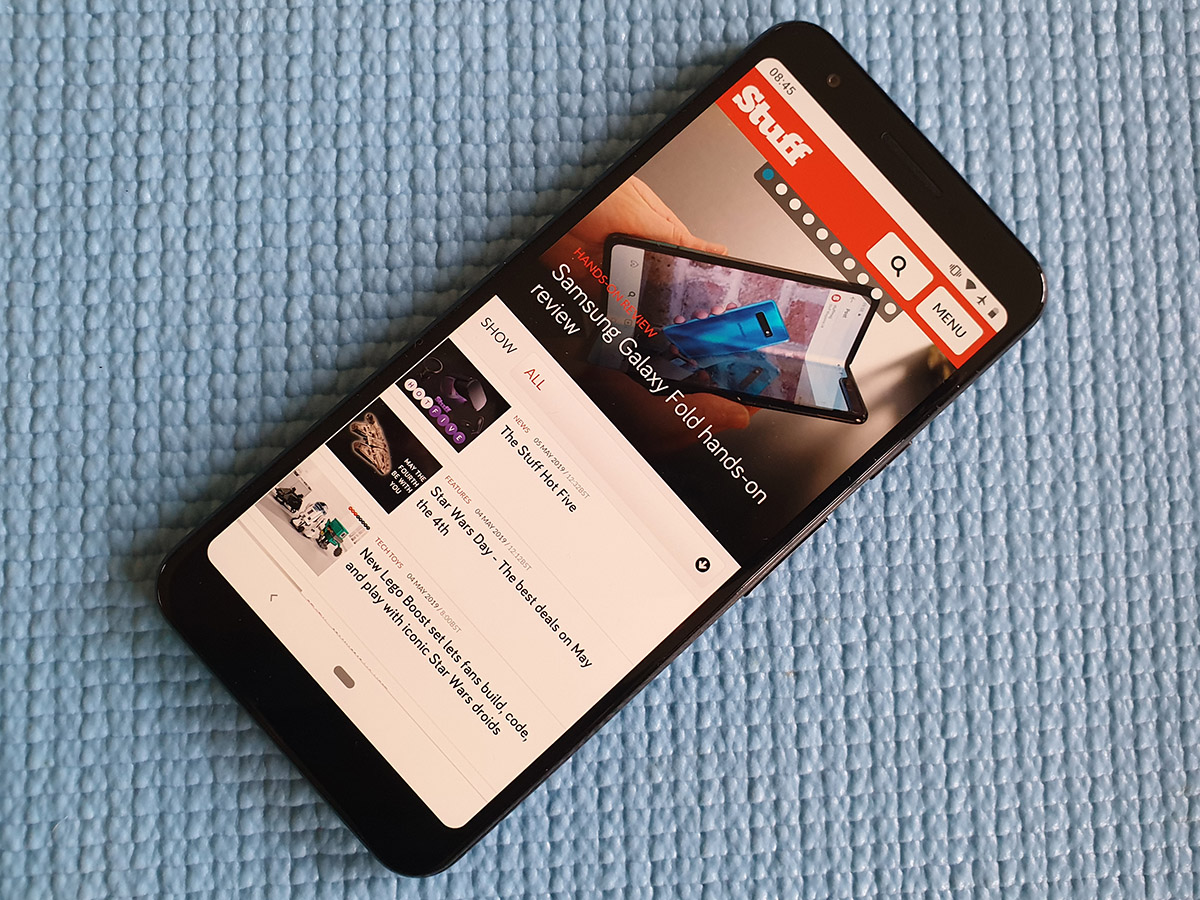
Don’t let the lack of bezel-busting screen tech deceive you: the Pixel 3a has a properly impressive display, given it’s an unashamedly mid-range mobile.
The rounded corners are your only real clue there’s something special underneath the glass. Google calls it gOLED, but all you really need to know is that you get 2220×1080 pixels stretched over 5.6in, and every one of ’em looks great.
Side-by-side with a Samsung Galaxy S10e (a £270 more expensive phone, don’t forget) there’s not a whole lot in it, with exceptional contrast, deep inky blacks and accurate colours.
The Pixel isn’t quite as vibrant or saturated, but that’s a good thing: videos look more natural, and it’s easier to make out the details in darker scenes. Google doesn’t call it an HDR display, but the Pixel 3a happily boosts brightness to the max when playing HDR-encoded YouTube clips. There’s no noticeable colour shift at extreme angles like there was on older Pixel phones, and it gets bright enough to see clearly when you step outdoors.
It doesn’t quite match the Galaxy S10’s retina-searing daylight mode, but you’ll only feel the effect on the sunniest of days. Google hasn’t skimped on sound, either, giving the Pixel 3a a potent set of stereo speakers.
It’s proper stereo, too, with the whole tonal range split across both drivers. Just keep in mind only the top driver fires forwards – the bottom one faces down, and is easily blocked by your hands. They get impressively loud, but without any noticeable distortion, delivering clear and clean audio. Certain tracks expose a slightly sharp high end, and there’s not as much bass here as you’d get from a Galaxy S10, but for most listening it’s spot on for the money.
There are no bundled USB-C headphones this time around – or any headphones at all for that matter. But you do get a headphone jack, so you can hook up your own pair of ‘buds without needing a dongle, like the vanilla Pixel 3.
PERFORMANCE: JUST ENOUGH
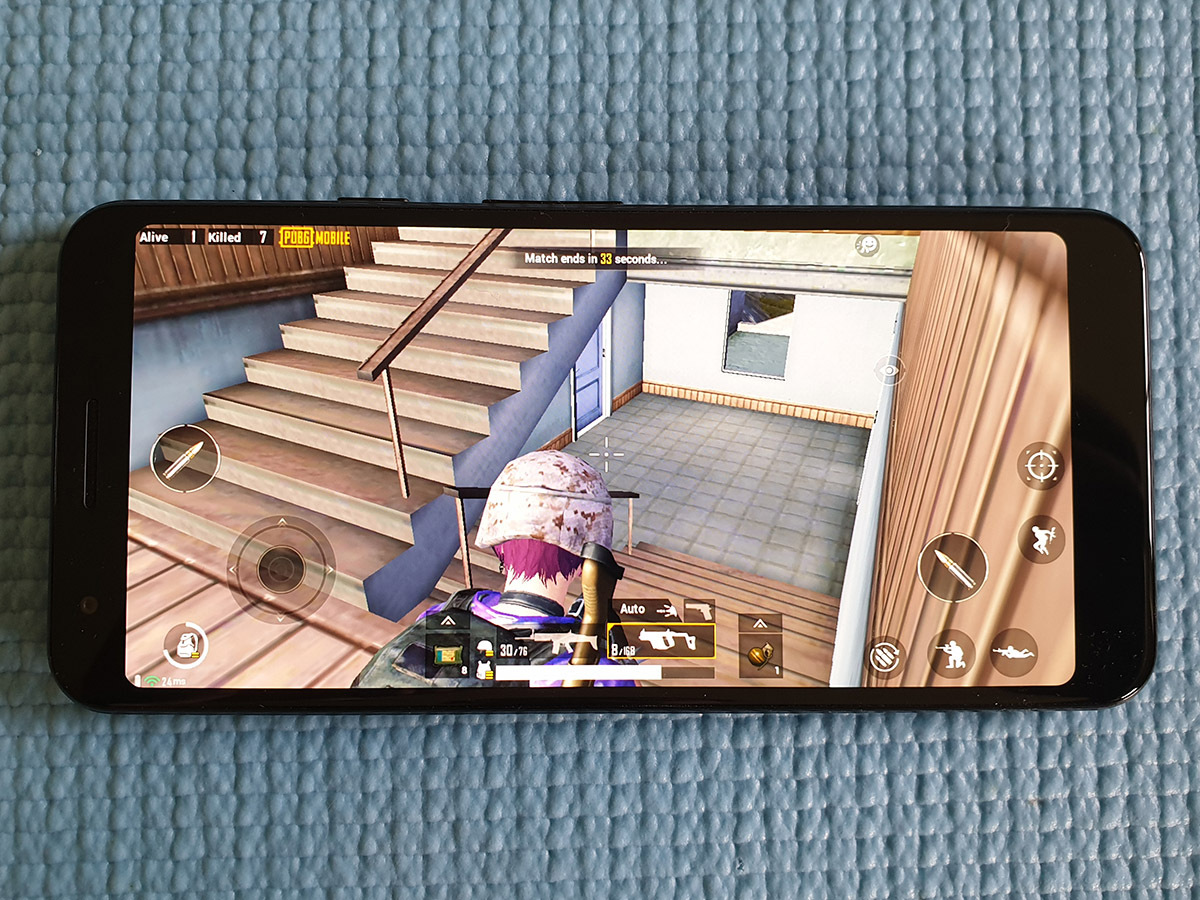
Streamlined software means the Pixel 3a feels super responsive – so much so you’d think it was running a much more powerful chip than the one Google went with. The Snapdragon 670 is Qualcomm’s new mid-range CPU, which shuffles into the range beneath the Snapdragon 710.
Both are octa-core chips, although the 670 runs at a slightly slower speed. You’d really only notice it in benchmarks, though.
Android is brilliantly optimised, with no slowdown and consistently smooth animations. It’s not like Spotify, YouTube or Twitter need a supercomputer to run, so most people are going to be perfectly happy with the performance on tap – even if it means waiting a little longer for those heftier apps to open.
Gamers might notice the difference compared to a true flagship, but only in demanding 3D titles. Arcade racer Asphalt 9 defaults to a slightly lower level of detail, with noticeable jaggy edges, but is playable for the most part with only the occasional stutter. PUGB recommends its High graphics preset, and frame rates are largely smooth, but that’s largely thanks to the clever behind-the-scenes balancing that lowers detail and draw distances to stop your fps from taking a hit during a firefight.
The 64GB of built-in storage is starting to look a bit behind the curve now, with other sub-£400 phones arriving with 128GB, and there’s no microSD card slot either for adding more space later.
Still, Android is smart enough to delete photos and videos from your phone once they’re uploaded to the cloud, so you’ll only run into problems if you have a gigantic music collection.
BATTERY LIFE: FULL IN A FLASH
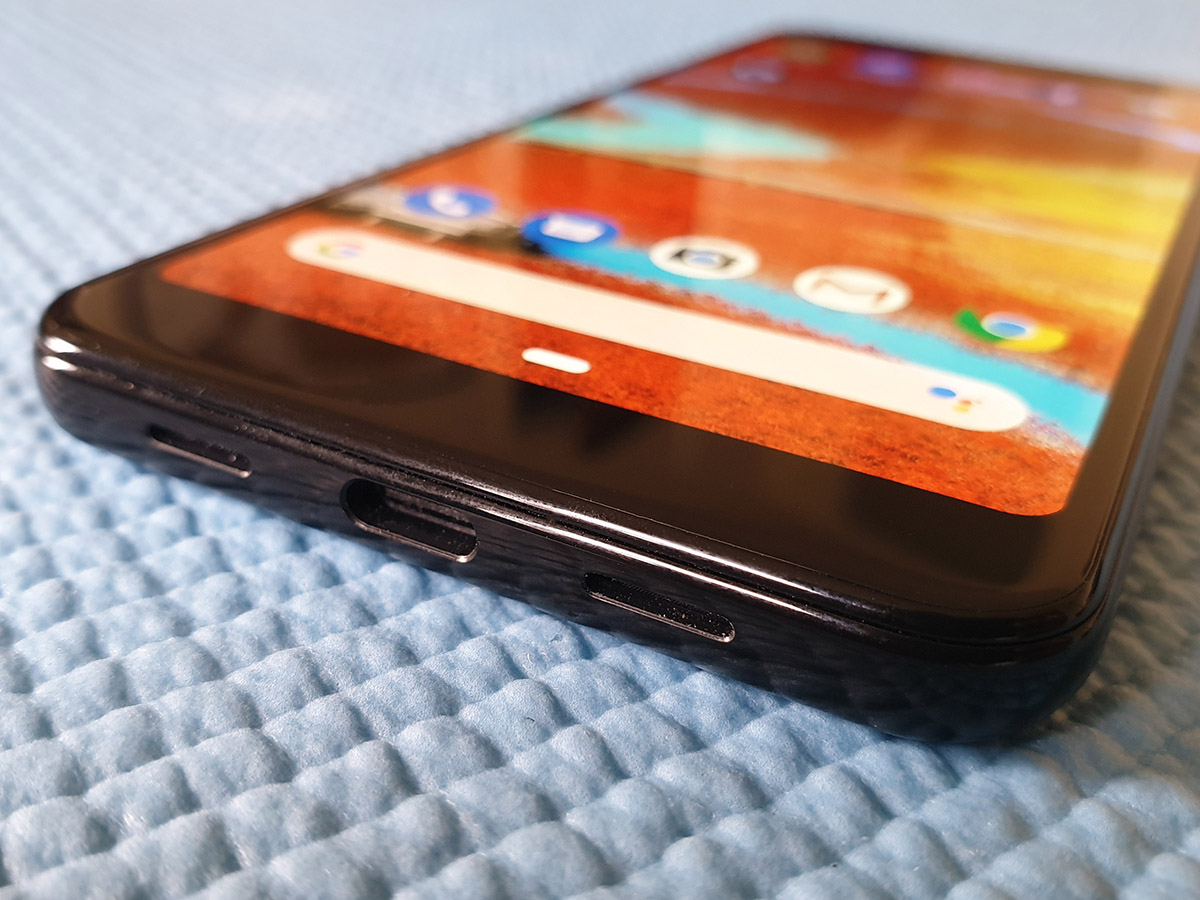
It’ll hardly come as a shock to learn the Pixel 3a can last an entire day on a full charge – most phones do, as long as you’re not caning them with HDR videos or marathon gaming sessions.
An hour spent PUBG-ing typically saw around 15-20% juice sapped, meaning only a handful of attempts at bagging that chicken dinner before it’s time to find a plug socket.
Streaming video, meanwhile, will keep going for around 12 hours at half brightness – that’s a step up from most other sub-£400 phones.
There’s only a 3000mAh battery in there, so don’t expect to go too long between top-ups, but more relaxed daily use saw us getting to bedtime without having to turn on the battery saver.
Unlike the full-fat Pixel 3, you don’t get wireless charging here, but the bundled USB-C fast charger isn’t hanging about: you can get back as much as seven hours of juice in just fifteen minutes. That’s a whole lot more useful than a trickly of juice sent over the air when you’re in a hurry.
GOOGLE PIXEL 3a VERDICT
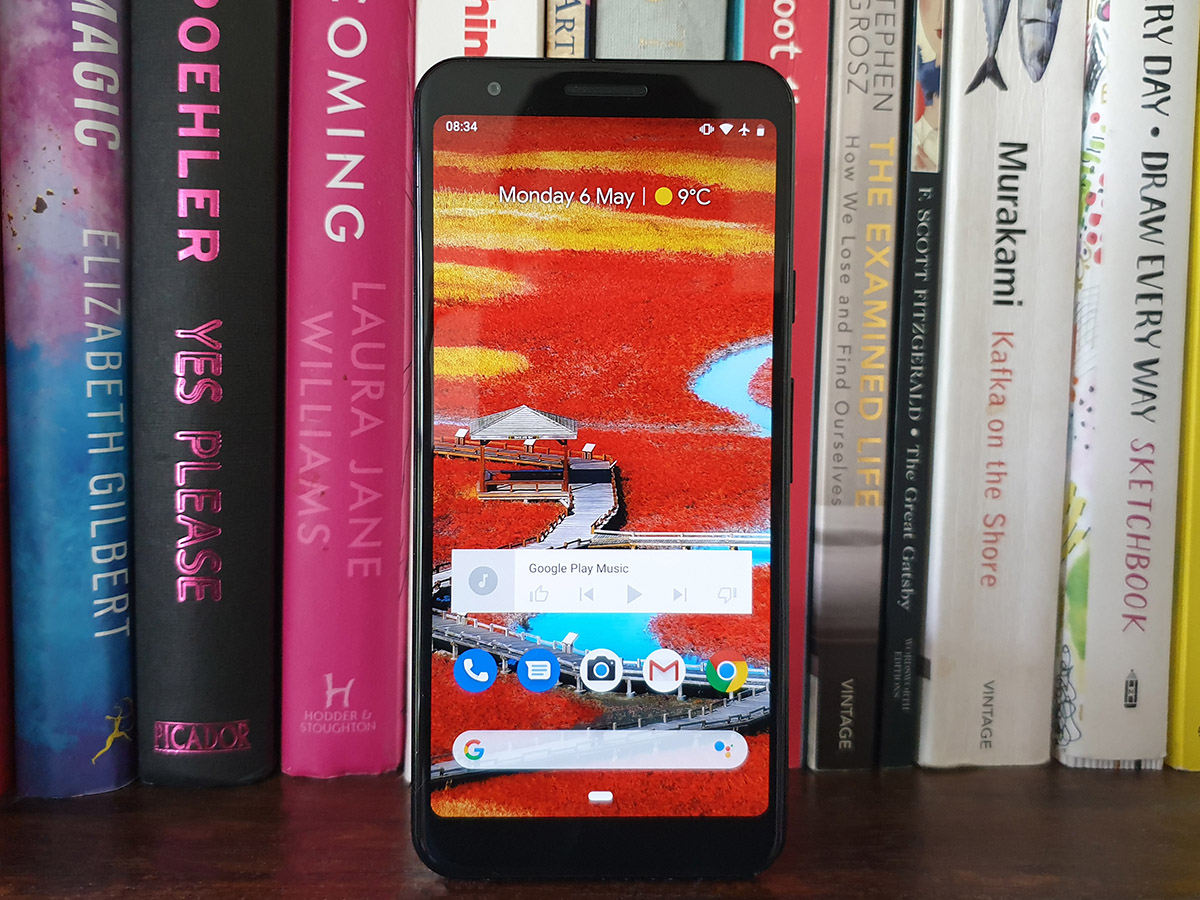
Hardware hopefuls aren’t going to be blown away by the Pixel 3a – it’s even less adventurous than the Pixel 3 (or the XL version, at least), a step backwards to bezels instead of notches. But if that’s what it takes to get Google’s purest form of Android for under £400, it sounds like a fair trade to us.
Camera image quality has arguably never been better at this price, but let’s be honest, Android Pie is really the star here. It’s the purest form of Google’s OS yet. There’s a hint of Google’s old Nexus programme here: well-rounded hardware that might not be the best-looking, or have the most features, but is genuinely affordable and has software that’s practically on par with iOS for consistent experience and ease of use.
Sure, the phone world has largely moved on to skinny screens and multi-lens cameras. You don’t get any of that here. The vanilla Pixel 3 has also been out long enough now that there’s not a massive gulf in price between the two, so the 3a isn’t an outright bargain.
And if a shortened spec sheet and simplistic design aren’t your thing? There’s always the Samsung Galaxy S10 – just be prepared to pay for it.
Tech specs
| SCREEN | 5.6in, 2220×1080 gOLED w/ 18.5:9 aspect ratio |
| CPU | Qualcomm Snapdragon 670 octa-core |
| MEMORY | 4GB RAM |
| STORAGE | 64GB on-board |
| CAMERA | 12MP, f/1.8 rear w/ OIS, dual-pixel PDAF, dual-LED flash. 8MP front |
| OPERATING SYSTEM | Android 9.0 Pie |
| BATTERY | 3400mAh non-removable |
| DIMENSIONS | 150x70x7.8mm, 157g |
Stuff Says…
Everything we loved about the Pixel, only cheaper. Rivals do more with design, but Google’s incredible camera and pure version of Android largely make up for it
Good Stuff
Fantastic camera image quality in all conditions
Stock Android with guaranteed updates
Brilliant all-round mid-ranger
Bad Stuff
Budget rivals have ditched display bezels
Single camera not as flexible as multi-lens competition
Plastic build not for everyone
